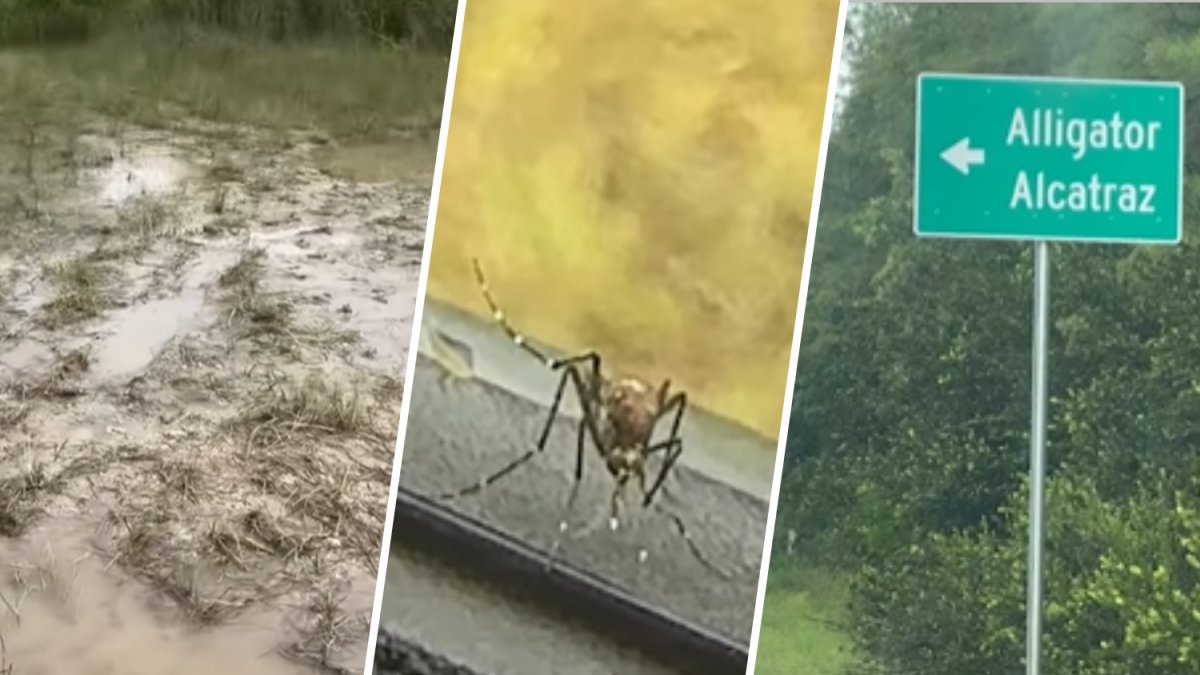The conditions at the new migrant detention center deep in the Everglades dubbed “Alligator Alcatraz” are what you would expect from South Florida—only worsened by the lack of infrastructure the cities and suburbs rely on.
The center, which will cost $450 million to operate, currently consists of tents and trailers surrounded by razor wire on wetland about 45 miles (72 kilometers) west of downtown Miami.
It was built in eight days over 10 miles (16 kilometers) of Everglades, and features more than 200 security cameras, 28,000-plus feet (8,500 meters) of barbed wire and 400 security personnel.
The White House has delighted in the area’s remoteness and the fact that it is teeming with pythons and alligators. It hopes to convey a message to detainees and the rest of the world that repercussions will be severe if the immigration laws of the United States are not followed.
But despite President Donald Trump’s jokes that any runaway detainees will have to be taught how to swerve from a gator, the largest threat may be a much smaller animal.
“You’re probably wondering why I’m wearing a hoodie and a rain jacket, and that’s because you can barely walk outside here because of the mosquitoes,” NBC6’s Hatzel Vela said in an Instagram reel. “Naturally, when you get a lot of rain and puddles of water, that of course breeds a lot of mosquitoes.”
Reporters for our sister station Telemundo 51, meanwhile, encountered the same problem.
“Oh my gosh, I can’t talk,” reporter Yvette Lewis tells her crew in Spanish. “My face is full, full of mosquitoes.”
She first spritzed herself modestly in bug spray—before dousing herself all over.
And reporter Alexis Boentes couldn’t get through his shot without smacking at bugs on his face.
The five Democratic state lawmakers that tried to visit the facility on Thursday also donned protective nets to keep the mosquitos at bay.
According to the U.S. Centers for Disease Control and Prevention (CDC), mosquito-borne diseases are those contracted through the bite of an infected mosquito. They include Zika virus, West Nile virus, malaria, dengue, chikungunya and yellow fever. However, authorities did say in May that mosquitos are not currently carrying anything that is a concern to public health.
“All mosquitoes like water because mosquito larvae and pupae live in the water with little or no flow,” the CDC states.
In Miami-Dade County, officials take steps to control the pest, including deploying a fleet of vehicles with sustainable spraying mechanisms that spread insecticide in areas where there may be standing water.
The county also offered home inspections to control the proliferation of mosquito larvae, and said it would install more than 300 traps throughout Miami-Dade over the next few months.
It was not immediately clear if so-called “Alligator Alcatraz” would also be equipped with similar mosquito repellants, or how that might effect the Everglades.
NBC6 crews also experienced the heavy downpours typical of rainy season, which have already caused flooding in the area, despite authorities’ assurance that the structure can withstand hurricane-force winds.
“It is a fully aluminum frame structure rated for winds of 110 miles and hour or a high-end Category 2 for those people who don’t think that we are taking that into consideration,” Kevin Guthrie said.
A spokesperson for Florida’s Emergency Management told NBC6 on Wednesday that vendors went back and tightened any seams at the base of the structures that allowed water intrusion during the heavy storm, which was minimal.
“There are over 13 different vendors that came together to get this solved in eight days,” Guthrie said.
